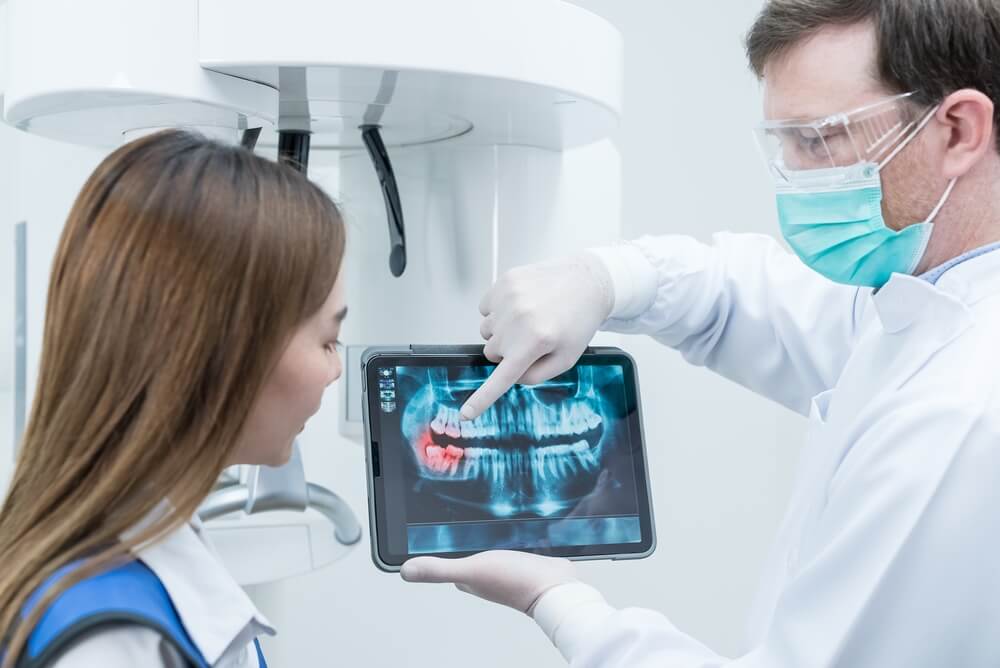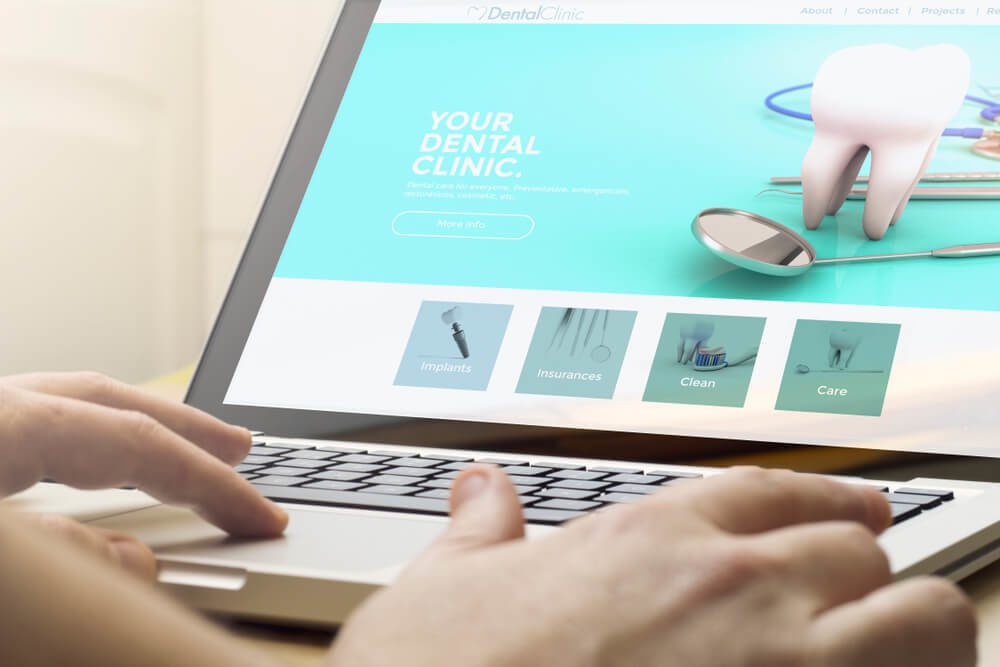
What Are the Essential Elements of the Best Dental Websites?
Dental professionals need a website to improve their reach and cater to more people who need their expertise. To engage patients better, their websites should have the following essential elements:
- Contact information
- “About Us” page
- Services page
- Educational resources
- Online appointment scheduling
- Reviews and testimonials
- Responsive website design
- HIPAA compliance
Investment in website development for dentists is important for dental experts to create the best websites so potential patients can easily find their clinics. This guide explains the importance of each site element and some best optimization practices. Let's go!
To learn how Digital Authority Partners can create a standout website for you, watch this video!
Highlight the Dental Office Contact Information
Featuring the dental office's contact information prominently on the website lets patients quickly call to book an appointment or visit the clinic. The contact information, such as the clinic phone number, address, email, and hours of operation, must be easy to find. Here are some tips for adding contact information to a dental website:
- Create a dedicated page on the website specifically for contact information.
- Display contact information in the header or footer to make it visible on every page.
- Use a larger font or highlight the contact information to make it stand out.
- Add a contact form to the website so visitors can email the dental office.
- Display the working hours on the contact page.
- Include links to Facebook, Twitter, Instagram, or other platforms on the contact page.
- Integrate prominent call-to-action (CTA) buttons throughout the website.
Create an “About Us” Page

Creating a compelling and informative "About Us" page establishes trust, credibility, and connections with potential patients. A dentist’s "About Us" page should introduce the dental team members, including their names, professional qualifications, and areas of expertise. Add photographs to create personal connections with potential clients. Use these best practices as well:
- Provide a brief history of the dental practice, including its founding, achievements, and values.
- Highlight your dental practice's specialties, technologies, and treatment methods.
- Emphasize patient-centered care, such as personalized treatment plans, compassionate service, or a relaxing dental visit.
- Share the dental practice's inspirations, experiences, and passions.
- Display dental association memberships, certifications, and credentials.
- Include high-quality images of the dental office, equipment, and a friendly team to make the page visually appealing.
Include a Services Page
A dental practice’s services page allows practitioners to showcase the range of treatments and procedures they offer, helping potential patients understand the breadth of their dental services. Dentists should start by organizing their services into categories or sections such as general dentistry, cosmetic dentistry, orthodontics, and oral surgery.
After categorizing their services, these strategies can help.
- List services with simple, non-technical titles such as "Teeth Cleaning and Exams," "Dental Implants," "Teeth Whitening," etc.
- Highlight the benefits and outcomes of each service and address common concerns.
- Support service descriptions with high-quality images or icons.
- Explain the procedure, particularly if it requires multiple steps or preparation.
- Include before and after photos of patients who have undergone specific treatments.
- Highlight technologies or unique techniques and mention them with specific services.
- Mention specific areas of expertise within the descriptions of relevant services.
- Offer downloadable brochures and service-related articles.
- End each service description with a CTA such as "Schedule a Consultation," "Book an Appointment," or "Learn More."
Add Educational Resources

Adding patient educational resources to a dental website is an effective way to provide valuable information, promote oral health, and establish the practice as a trusted source of dental knowledge.
Start by identifying the key topics or areas of interest to cover on these pages, such as oral hygiene, dental procedures, common dental issues, oral health tips, preventive care, and more. Follow these best practices when creating and adding dental educational resources.
- Create educational articles, blog posts, videos, infographics, and PDFs.
- Create a dedicated website page or section for patient education resources.
- Organize educational resources into categories, such as "Oral Hygiene," "Dental Care Tips," "Children's Dentistry," etc., to make them easier for patients to find and use.
- Provide a search or filter function on the patient educational resources page to help visitors find relevant content.
- Present educational resources in videos, images, interactive tools, and infographics.
- Use descriptive titles to highlight key points or benefits of each educational resource.
- Link educational resources to website content, blog posts, and procedure pages.
- Use proper attribution and citations in educational resources.
- Promote patient education on your website, blog, social media, newsletters, and patient communications.
Integrate Online Appointment Scheduling
Adding an online appointment scheduling feature to your dental website can streamline the appointment booking process for patients and improve the overall efficiency of the clinic.
Various online appointment scheduling tools, such as Acuity Scheduling, Zocdoc, and Square Appointments, are available online. Dentists can hire a web development agency to create a custom-made appointment-setting tool. These best practices can help.
- Integrate the tool into the dental website.
- Put the scheduling widget or button on the homepage, contact page, or "Schedule an Appointment" page.
- Use contrasting colors or text to draw attention to the scheduling feature.
- Customize the appointment form to include the patient's name, contact information, preferred appointment date and time, reason for visit, and special requests or concerns.
- Use online appointment scheduling to give patients clear instructions.
- Set the appointment scheduling tool to send patients automated confirmation emails or texts after they book.
- Sync the dental practice's calendar or scheduling system with the online appointment scheduling tool.
Include Reviews and Testimonials

Using reviews and testimonials on the dental website can build trust, showcase the practitioner’s expertise, and attract new patients. Dentists must request patient feedback after visits. Ask about their treatment, results, and satisfaction. Remember these best practices on how to collect and use patient reviews.
- Encourage patients to leave Google, Yelp, or Healthgrades reviews or write testimonials.
- Select the most compelling and representative reviews and testimonials for the website.
- Obtain written consent from patients to publicly display their feedback.
- If patients consent, include patient information, occupation, and location with testimonials and photos.
- Consider a dedicated page, sidebar widget, or rotating testimonial section for the reviews and testimonials section.
- Feature testimonials from different demographics, age groups, and dental needs.
- Add ratings and reviews from Google, Yelp, and Facebook.
- Respond to positive and negative patient reviews on external platforms.
Adopt a Responsive Website Design
Responsive website design is a design approach that ensures the site adapts and displays correctly across different devices and screen sizes. These include desktop computers, laptops, tablets, and smartphones. It aims to provide optimal viewing and user experience regardless of the device used. Here are strategies to implement a responsive design on your dental website:
- Choose a responsive theme or template in a CMS such as WordPress, Joomla, or Drupal.
- Use a mobile-first approach to design and optimize the website for smaller screens.
- Use responsive grid layouts such as CSS Grid or Bootstrap to organize website content.
- Ensure your website's images, videos, and other media can scale according to screen size.
- Use relative font sizes (em or rem units) instead of fixed pixel sizes to optimize site typography for different devices.
- Test the site on different devices and screen sizes to make sure it works.
- Optimize images, minimize CSS and JavaScript files, use browser caching, and use content delivery networks (CDNs) to speed up the responsive website.
- Implement mobile-friendly navigation, such as collapsible menus or hamburger menus.
- Streamline content for mobile devices to highlight important information.
- Test the site on Chrome, Firefox, Safari, and Microsoft Edge to ensure consistency.
Keep HIPAA Compliance Top of Mind

Health Insurance Portability and Accountability Act (HIPAA) compliance aims to protect the privacy and security of individuals' protected health information (PHI) in the healthcare industry.
Here's an overview of HIPAA compliance and steps to ensure dental websites are HIPAA compliant:
- Learn HIPAA's Privacy, Security, and Breach Notification Rules.
- Assess the dental website for PHI security vulnerabilities.
- Encrypt appointment forms and contact information on the dental website using SSL or TLS.
- Communicate your dental practice's privacy policies on the website.
- Obtain patient consent or authorization before collecting any PHI through your website.
- Ensure the site is on a secure and HIPAA-compliant server.
- Apply strong authentication and access controls to limit access to PHI on the website.
- Use Business Associate Agreements for website hosting, data storage, and other third-party services.
- Develop and implement a breach response plan for any security incidents.
Summing Up
When developing a website for dentists, ensure these essential elements are present and optimized. These elements guarantee an efficient, effective, professional dental website, higher site engagement, and increased clinic visits.
Learn more about website development for dentists. Contact Digital Authority Partners (DAP) for expert dental web development help.
Want To Meet Our Expert Team?
Book a meeting directly here




